Click on images to enlarge
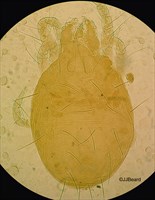
Fig. 1. Eotetranychus queenslandicus adult female - dorsal habitus.
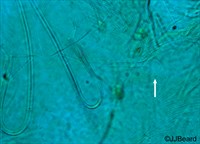
Fig. 2. Eotetranychus queenslandicus adult female - detail of peritreme (arrow indicates tip).
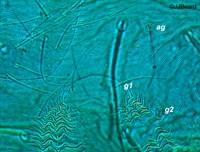
Fig. 3. Eotetranychus queenslandicus adult female - detail of pregenital striae and striae on genital flap.
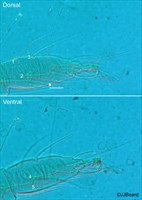
Fig. 4. Eotetranychus queenslandicus adult female - detail of tarsus I, indicating number of proximal setae.
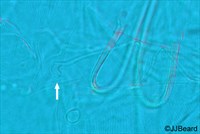
Fig. 5. Eotetranychus queenslandicus adult male - detail of peritreme.
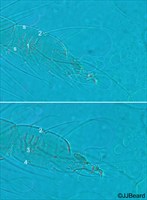
Fig. 6. Eotetranychus queenslandicus adult male - detail of tarsus I, indicating number of proximal setae.

Fig. 7. Eotetranychus queenslandicus adult male, detail of aedeagus - a. holotype (in dorsal aspect); b. paratype (in dorsal aspect); c.-f. non type material, c. in dorsal aspect, d.-f. in lateral asepct (with and without associated structures illustrated).

Fig. 8. Eotetranychus queenslandicus adult male - detail of aedeagus (upper: dorsal aspect; lower: lateral aspect).
Material examined
types; non-types
Taxonomy
Subfamily Tetranychinae
Tribe Tetranychini
Distribution
*Australia
Taxonomy Changes
None
Diagnosis
Female
- empodia I-IV with proximoventral hairs
- empodia I-II each with minute dorsal spur
- peritreme with short distal hook, like golf-club (Fig. 2)
- dorsal opisthosomal striae transverse, sometimes irregular between setae e1-e1 and setae f1-f1
- dorsal setae long, slender, finely barbed (central setae: 76-89 long)
- pregenital striae longitudinal (Fig. 3)
- palp with spinneret stout, twice as long as wide
- tarsus I with sockets of five tactile setae and one solenidion proximal to, and two ventral setae overlapping, the socket of the proximal duplex seta (Fig. 4)
- tarsus II with sockets of four tactile setae and one solenidion proximal to, and two ventral setae overlapping, the socket of the duplex seta
- chaetotaxy for legs I-IV (non-type specimens and Manson 1967):
- femura 10, 7, 4, 3
- genua 5, 5, 4, 4
- tibiae 10(1+0), 8, 6, 7
- tarsi 18(3+3), 16(2+3), 11(1+0), 11(1+0)
- light yellow with dark spot on either side
- eggs with prominent dorsal stipe
Male as per female plus:
- empodium I claw-like
- empodia II-IV as in female
- peritreme with short distal hook, like golf-club (Fig. 5)
- palp with spinneret slender, 3 times as long as wide
- dorsal setae long, slender, finely barbed (central setae: 55-75 long)
- tarsus I with sockets of four tactile and two solenidia proximal to, and one solenidion and two ventral setae overlapping, the socket of the proximal duplex seta (Fig. 6)
- tarsus II with sockets of three tactile setae and one solenidion proximal to, and one dorsal and two ventral setae overlapping, the socket of the duplex seta
- chaetotaxy for legs I-IV (from non-type specimens):
- femora 10, 7, 4, 3
- genua 5, 5, 4, 4
- tibiae 13(4+0), 8, 6, 7 [ti I often with 12(3+0)]
- tarsi 20(5+3), 16(2+3), 11(1+0), 11(1+0)
- aedeagus straight, directed posteriorly, slender, tapering to blunt tip; ventral margin curved dorsally, dorsal margin almost straight (Figs 7, 8) (see Notes; and Notes for E. sexmaculatus)
Hosts
*Codiaeum spp., Codiaeum variegatum (Euphorbiaceae), Persea americanum (Lauraceae), Vitis vinifera (Vitaceae).
Similar Taxa
See Eotetranychus sexmaculatus fact sheet for further information.
The aedeagus of E. queenslandicus closely resembles some of the illustrations of the aedeagus of E. sexmaculatus, but does not resemble others. The identity of E. sexmaculatus needs further detailed scrutiny before any conclusions can be made. Eotetranychus queenslandicus also resembles E. asiaticus Ehara, a former synonym of E. sexmaculatus. See Seeman et al. (2017) for further information.
According to Manson (1967), Eotetranychus queenslandicus closely resembles E. pamelae Manson but is distinguished by the more elongate aedeagus of the former. Additionally, the spinneret of the male E. queenslandicus is more blunt than that of E. pamelae which is sharply tapered (Manson 1967).
Biology
References
*Manson, D.C.M. (1967) Mites of the families Tenuipalpidae and Tetranychidae intercepted entering New Zealand from overseas. New Zealand Journal of Science 10: 664-674
Seeman, O.D., Beard, J.J., and Zhang, L. (2017) A new Australian species of Eotetranychus (Acari: Tetranychidae) from buck spinifex Triodia mitchelli (Poaceae), intraspecific variation in Eotetranychus, and the synonymy of Platytetranychus with Eotetranychus. Zootaxa 4324(3): 491-517
Notes
This species was found in quarantine in New Zealand on the underside of leaves of croton, Codiaeum sp. (Euphorbiaceae) imported from Queensland.
Copyright © 2018. All rights reserved.